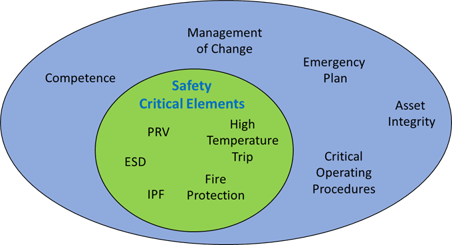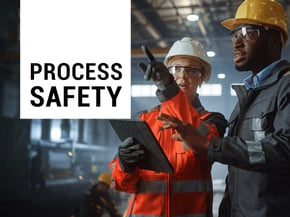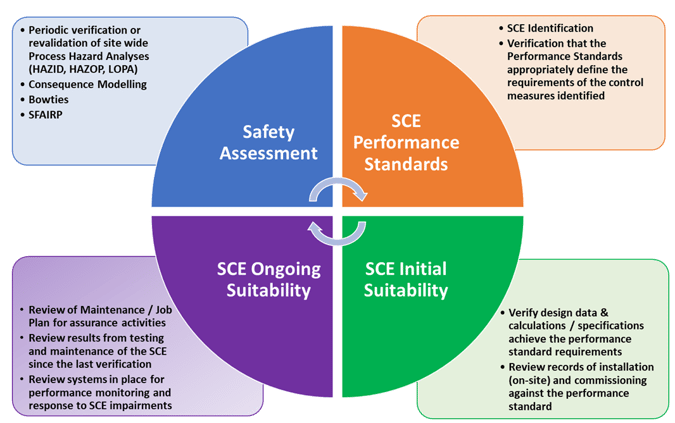Managing risk in a facility requires a clear understanding and verification of:
- Our significant hazards and their potential consequences
- The controls in place to help us reduce the likelihood of an undesired outcome from occurring
- What assurance do we have in place to ensure the controls will work on demand
Controls are generally physical, software or procedural. Physical and software (automated) controls tend to be more effective than procedural controls that rely on human action.
For this blog, I will refer to Safety Critical Elements (SCEs) as those controls that have a physical aspect to them and form part of the plant, as per illustration below. They are generally designed with integrity and reliability in mind and are depended on to prevent high-consequence process safety incidents or limit their scale. We need assurance that these controls are suitable and effective.


|

|

|
| We offer a CRITICAL RISK MANAGEMENT FOR DIRECTORS & EXECUTIVES Course HERE! |
We offer Consulting Services for LOPA Studies HERE! |
Find out about our next PROCESS SAFETY FOUNDATIONS course HERE! |
To have confidence in your overall management of SCEs, the following four questions should be answered:
- Have all major incident hazards been identified, and have all control measures been identified to eliminate or minimise the risk, so far as is reasonably practicable?
- Have performance standards been established for the SCEs?
- Is the design adequate i.e., in line with industry standards and/or code requirements?
- Will the SCE remain suitable throughout the lifetime of the facility?
In line with guidance in industry or published by regulators, many Operators I have come across have their SCE verification arrangements well documented and achievable relative the resources available to them. There are however still variations in understanding and interpretation of this guidance in and across industry, and not all Operators have a multitude of resources available to them to achieve these requirements. For those who are still in the process of achieving this, the most appropriate place to start is to develop a verification plan based on the activities illustrated below:

If your plan covers all of the above areas, allows for independent, competent, and experienced people to perform the above verification tasks, and is embedded within your Management Systems, you are well-placed to manage high-consequence process safety risks on your site.
Download our SCE Verification Checklist for more information on how to approach this important topic:

Ready to take your process safety strategy to the next level?
Explore our SAFETY MANAGEMENT SYSTEM SERVICE, to build practical, defensible safety solutions. Take the lead in managing process safety hazards. Enrol in our HAZOP LEADER TRAINING course to build the skills and confidence to run effective HAZOPs.
Have questions or need guidance? GET IN TOUCH. We're here to help.